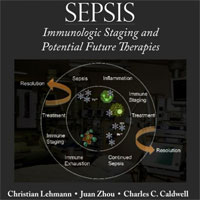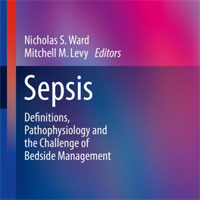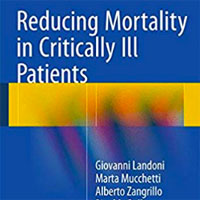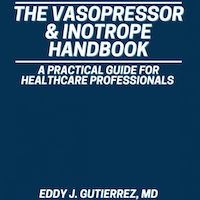Tag: septic shock
Speedy sepsis care slows in-hospital mortality
Sepsis and septic shock patients treated within 3 hours had lower in-hospital mortality rates than those treated between hours 3 and 12, based on data from nearly 50,000 adult patients. The findings were presented at an international... read more
Effective Sepsis Detection with Peripheral Blood Monocyte Distribution
This study evaluated the diagnostic accuracy of peripheral blood monocyte distribution width alone and in combination with white blood cells (WBCs) count for early sepsis detection in the emergency department. An monocyte... read more
Venous Doppler and Veno-Cardiac Coupling
Concepts have been clanging around my head since I participated in Philippe Rola's sedulous Hospitalist & Resuscitationist Conference in Montreal. Initially, the abstractions of ventriculo-arterial coupling, Guytonian physiology... read more
Vasopressors and Inotropes for Shock Syndromes
Vasopressors and inotropes are cornerstones in the management of shock syndromes. Understanding vasopressors' receptor activity and resultant pharmacological response enables clinicians to select the ideal vasopressor(s)... read more
Steroids in Septic Shock – Four Misconceptions and One Truth
The utility of steroids in sepsis has been debated passionately for decades. There is hope that steroids might improve mortality, but also fear that they could increase infectious complications. Practice varies widely. What... read more
Sepsis: Personalization vs. Protocolization?
The history of intensive care has been littered with too many false dawns. Old management dogma, now derided, have been replaced by new and equally resolute convictions, many of which will, in time, undoubtedly follow a similar... read more
Positive Outcomes, Mortality Rates, and Publication Bias in Septic Shock Trials
Out of 65 eligible septic shock trials, 14 did not have a clearly defined control group (two standards of care were compared) and were excluded. For the 51 remaining trials, control-group mortality ranged between 15.9%... read more
Minimizing Catecholamines and Optimizing Perfusion
The main goal of hemodynamic resuscitation in shock is to improve tissue perfusion and oxygenation. As these cannot be directly evaluated at bedside in routine practice, physicians are left with surrogates such as perfusion... read more
Measuring Lactate vs. Capillary Refill in Guiding Resuscitation in Shock
Capillary refill is as least as good as measuring lactate in guiding resuscitation efforts in septic shock. Moreover, using a lactate-driven resuscitation strategy led to use of more pressors and more IV fluid administration... read more
Clinician Perception of a Machine Learning–Based Early Warning System Designed to Predict Severe Sepsis and Septic Shock
In general, clinical perceptions of Early Warning System 2.0 were poor. Nurses and providers differed in their perceptions of sepsis and alert benefits. These findings highlight the challenges of achieving acceptance of predictive... read more
Angiotensin II For Septic Shock Treatment
Angiotensin II has been studied for many years and has consistently shown to increase MAP. This medication adds a new mechanism of action to the vasopressor arsenal that is already used for septic shock. Angiotensin II should... read more
Fluid Responsiveness in Sepsis
Fluid challenge is a common practice in the ICU. It is one of the most important resuscitation manoeuvres of acute circulatory failure management in critically ill patients. Adequate fluid resuscitation is very important... read more
Risk Factors at Index Hospitalization Associated With Longer-term Mortality in Adult Sepsis Survivors
In this cohort study of 94 748 adult sepsis survivors, age, male sex, 1 or more severe comorbidities, prehospitalization dependency, nonsurgical status, acute severity of illness, site of infection, and organ dysfunction... read more
Addressing Shortcomings in Infection and Sepsis Treatment Should Be Top of the Priority List
Hospitals are increasingly facing the challenge of cutting costs while also improving clinical outcomes. This is certainly true in the infectious disease sector, as unrecognized or ineffectively treated bacterial infections... read more
Characteristics, Management, and In-hospital Mortality Among Patients with Severe Sepsis in ICU in Japan
Sepsis is a leading cause of death and long-term disability in developed countries. A comprehensive report on the incidence, clinical characteristics, and evolving management of sepsis is important. Thus, this study aimed... read more
Immunotherapy Effects on Sepsis
A randomised controlled multicentre trial assessed for the first time the safety and pharmacokinetics of an antiprogrammed cell death-ligand 1 (anti–PD-L1) immune checkpoint inhibitor (BMS-936559; Bristol-Myers Squibb,... read more
Lactate-Guided Resuscitation Only Encourages Over-Resuscitation and Downstream Harms
The Centers for Medicare and Medicaid Services and the Surviving Sepsis Campaign both rushed to offer guidance on the appropriate management strategies for patients presenting with septic shock. In both cases, a lactate-guided... read more
Effect of High-dose Ascorbic Acid on Vasopressor’s Requirement in Septic Shock
In this study, administration of high-dose ascorbic acid significantly decreased the requirement for vasopressor's dose and duration in surgical critically ill patients with septic shock. Several mechanisms including anti-oxidant,... read more
TCR Activation Mimics CD127 low PD-1 high Phenotype and Functional Alterations of T Lymphocytes from Septic Shock Patients
The proportion of CD127lowPD-1high T cells in patients was increased compared with healthy volunteers, although no global CD127 regulation was observed. Our results suggest that TCR activation participates in the occurrence... read more
Loss of Sphingosine 1-Phosphate in Septic Shock is Predominantly Caused by Decreased Levels of HDL
Sphingosine 1-phosphate (S1P) is a signaling lipid essential in regulating processes involved in sepsis pathophysiology, including endothelial permeability and vascular tone. Serum S1P is progressively reduced in sepsis patients... read more
Updates and Controversies in the Early Management of Sepsis and Septic Shock
For patients in the ED who are suspected of having sepsis, swift, effective management is vital to improving outcomes. This issue reviews the latest evidence on the diagnosis and treatment of sepsis and septic shock: ... read more
Sepsis and Septic Shock – What Matters from EM Cases Course
In this podcast Dr. Sara Gray, intensivist and emergency physician, co-author of The CAEP Sepsis Guidelines, answers questions such as: How does one best recognize occult septic shock? How does SIRS, qSOFA and NEWS compare... read more









